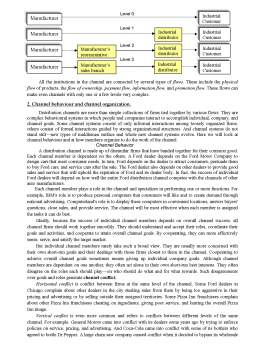Extras din curs
Tema 4: Market segmentation
1. Market segmentation
2. Market targeting
3. Market positioning
The term “market” has acquired many meanings over the years. In it’s original meaning, a market was a location where buyers and sellers met to exchange goods and services. To a marketer a market is the set of all actual and potential buyers of a product. The market, in it’s evolution has passed through 3 stages:
1) Mass marketing – During this stage the seller mass produces, mass distributes and mass promotes one product to all buyers. The advantage of mass marketing is that it should lead to cost economies and create the largest potential market.
2) Product variety marketing - - The seller produces 2 or more products that have different features, style, quality or size.
3) Target marketing, the seller identifies, selects on or more of them and develops products and marketing mixes for each of them.
Today’s companies are moving away from mass marketing and product variety marketing to target marketing because it can help the sellers better find the marketing opportunities and develop the right product for each target market.
Target marketing calls for 3 steps:
a) Market segmentation
b) Market targeting
c) Market positioning
Market segmentation means dividing a market into different groups of buyers who might require separate products or marketing mixes. There are different market segmentation variables(factors)
1) Geographic variables – These variables include: region, City size. Country size, density or climate
2) Demographic variables – These variables include: Age, Gender, family size, income, occupation, education, religion, race, nationality and family life cycle(1)young, single, 2)Young married no children 3) young married child under 6 4)young married child over six, 5) old married no children 6) Old single no children, 7) Old married no children under 18)
3) Psychographic variables – They include: Lifestyle, personality and social class(1) Lower lowers(cersetori, vagabonzi) 2) Upper lowers(nu au lucru stabil) 3)Working class(nu le ajunge de satisfacerea necesitatilor suplimentare) 4)Middle class(salarii stabile, au economii) 5) Upper middles(independent business people, middle managers, au reserve mai mari, nu repartizeaza veniturile) 6) Lower uppers (foarte multi bani,) 7) Upper uppers(familii ku dinastii, banii nu sunt kistigati ci mosteniti, nu exteriorizeaza, sunt eruditi)
4) Behaviorist variables – Include: Purchase occasion(Regular, special), usage rate(light, medium, high rate user), loyalty status, attitude towards the product, benefits.
Requirements for an effective segmentation
- Measurability – the degree to which the size and purchasing power of segments can be measured.
- Accessibility – the degree to which segments can be reached and served.
- Substantiality - the degree to which segments are large and profitable enough
- Action ability – The degree to which effective can be designed for attracting and serving segments
=2=
Market targeting (diferit de target marketing)
Market targeting means evaluating each segment’s attractiveness and selecting one or more of the market segments to enter. Market targeting has 3 strategies:
1) Undifferentiated strategy –
Product marketing mix >>>>> market
Using this strategy the company might decide to ignore market segment differences and go after the whole market with one market offer. It focuses on what is common in the needs of consumers. It designs a product and marketing program that appeal to the most buyers. This strategy relies on mass distribution and mass advertising. It provides cost economies but most modern marketers have strong doubts about this strategy because it is difficult to develop a product or a brand that will satisfy all consumers.
2) Differentiated market
Product 1, Product 2, Product 3 >>>> Segment 1, segment 2, segment 3
Using this type of strategy the firm decides to target several market segments and designs separate offers for each. This strategy hopes for higher sales and a stronger position within each market segment. Differentiated marker typically creates more total sales than undifferentiated marketing(1) but it also increases the costs of doing business.
3) Concentrated strategy
Product market mix >>>> Segment 1, segment 2, segment 3
This strategy is especially appealing when the company resources are limited. Instead of going after a small share of a large market. The firm goes after a large share on or a few small submarket. Through this strategy the company achieves a strong market position and a special reputation. It enjoys many operating economies because of specialization in production, distribution and promotion. If the segment is chosen well the company can obtain a high rate of return on it’s investments. But this strategy also involves some risks:
a) The particular market segment can become too small
b) Larger competitors may decide to enter the same segment
Preview document
Conținut arhivă zip
- Notiuni de Marketing
- Distribution.doc
- Pricing.doc
- Promotion-2.doc
- t5.doc
- Tema 4.doc



















































